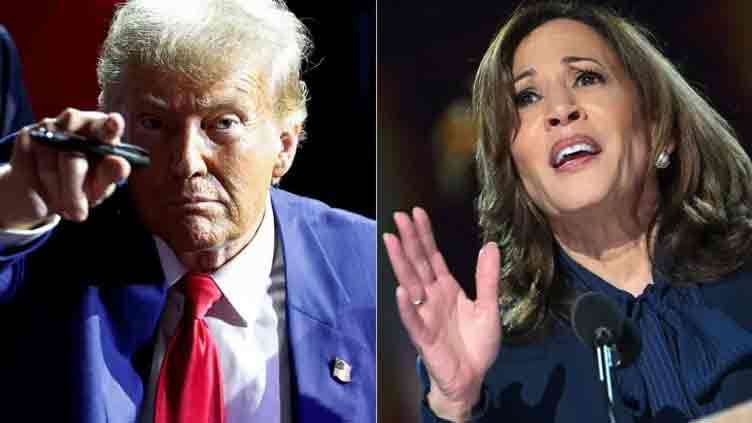US election - Let's know key facts

World
The United States has 50 states and District of Columbia (Washington)
A candidate needs 270 elector votes out of 538 to reach White House
If no one is able to secure majority of Electoral College, the Congress votes and decides president
Almost 47 states offer early voting
By Ahad Khan
The United States presidential election, which certainly affects the world more than any other electoral exercise across the globe does, is going to take place on Nov 5.
Vice President Kamala Harris is Democratic candidate while former US president Donald Trump is running on the Republican ticket for the 2024 US presidential election.
The United States has 50 states and District of Columbia (Washington).
There are 161.42 million registered voters in this presidential election. It is interesting to know that there are almost 42 million young voters that include eight million new voters who have the potential to tip the scales in either of the candidate’s favour.
However, the outcome of the presidential election depends on the Electoral College of these 50 states where 270 elector votes are needed to reach the White House.
Seven swing states eventually determine the final result. In addition, early voting and absentee ballots also play an important role in deciding the winner of the race.
As all eyes are on the US election, let’s delve into the process for a better understanding.
Electoral College
A common US voter does not directly vote for the president or vice president. Instead, voters cast their votes for ‘electors’ in the Electoral College which ultimately chooses the president on their behalf.
In simple terms, the total number of winning electors makes the Electoral College.
The Electoral College consists of 538 electors.
Who are electors?
The electors are the nominated candidates of both parties in an area who are contesting the election.
It is necessary for a candidate to have at least 270 out of 538 electors (a simple majority) by his side to become the president.
For broader understanding, an Electoral College is a series-wise process which includes the:
• Selection of electors by US citizens through voting
• Electors then cast votes for the president and vice president
• Congress counts the votes of electors
Can an elector vote against party lines?
It is very unlikely that an elector casts his vote against party lines but if an elector votes for someone else, he or she may be fined, disqualified, and replaced by another elector.
Unusual Results of Electoral College in past
Most of the states have a ‘winner-takes-all’ system, but a few divide their electoral votes proportionally.
Therefore, it is possible to win the Electoral College but lose the popular vote as happened in 2016, 2000, and three times in the nineteenth century.
Similarly in 2000, Republican candidate George W. Bush became the president with 271 electoral votes but his opponent, Democratic candidate Al Gore, lost the electoral college despite having popular vote by over half a million.
What happens if Electoral College vote is tied?
If no one is able to secure majority of the Electoral College, the House of Congress votes and decides the president.
It also happened twice, first in 1800 when the House chose Thomas Jefferson as president and then again in 1824 presidential election when the House preferred John Quincy Adams as the resident of the White House.
Role of early voting and mail-in ballots
Although the official election date is Nov 5, 2024, the US citizens have a choice to cast their votes prior to the official election date through mail-in ballots or in-person early voting.
Almost 47 states offer early voting while only three states - Mississippi, Alabama and New Hampshire - don’t have the facility for early voting.
Swing states, the ultimate deciders
In the US presidential election, the swing states usually play an all-important role in deciding the ultimate outcome of presidential elections.
Unlike most of the states which have a long history of voting for a particular party, the swing states do not have a consistent pattern of voting for one party and can swing to either party during the election.
Notable swing states in 2024 are likely to include Arizona, Georgia, Michigan, Nevada, Pennsylvania, North Carolina and Wisconsin. Owing to significance of swing states, presidential candidates of both parties spend most of their time campaigning in these states.


